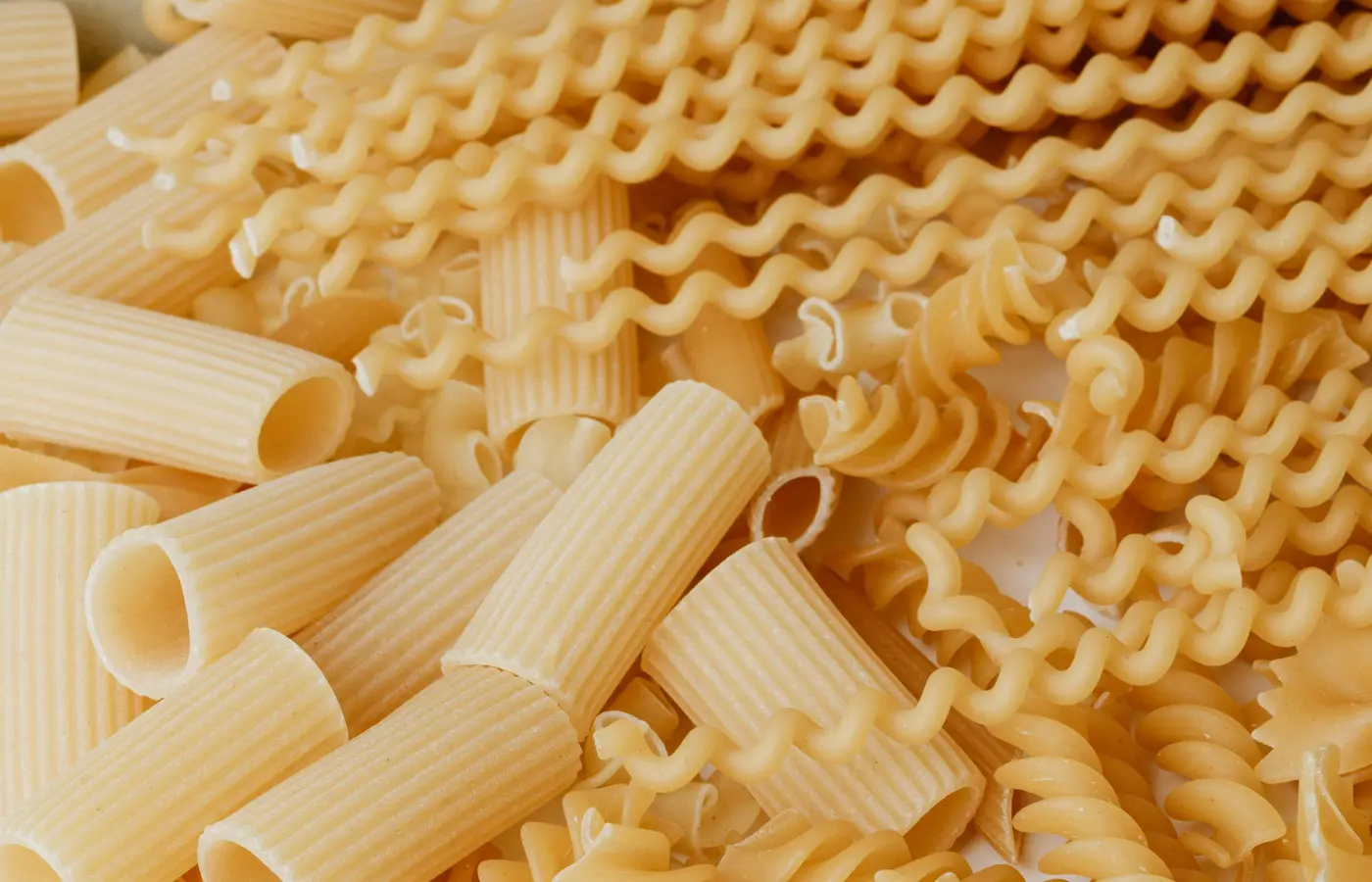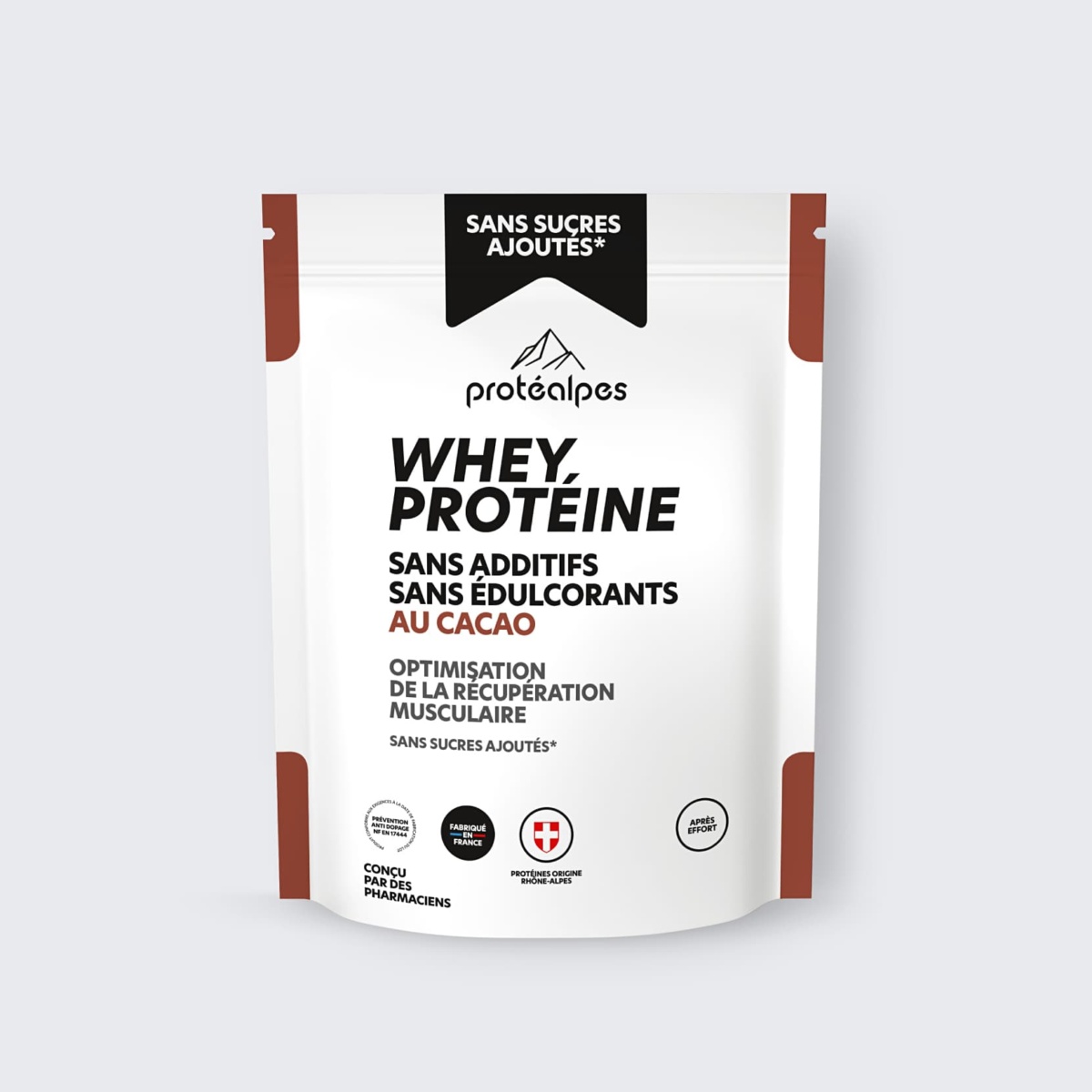To lose fat and achieve a lean physique, you need a calorie deficit. Dry weight diet is essential to find thebalance between sufficient intake and a caloric deficit aimed at eliminating fat mass.
It's tempting tocut back on carbohydrates, but they play an important role in weight loss. Reducing them too quickly is counter-productive. The risk is that you'll burn muscle instead of fat.
So, how many carbohydrates do you need to dry out? The answer depends on weight, metabolism and training level. Between simple and complex carbohydrates, fiber-rich meals and foods to avoid, there's a dietary program to adopt to optimize fat loss.
Let's take a look at how many carbohydrates to consume per day, and our tips for successful weight loss.
The role of carbohydrates in muscle leaning
Carbohydrates: calories for energy
We often associate the terms carbohydrates and sugar, because carbohydrates are substances that are converted into glucose after digestion. And glucose is the source of energy for cells. In other words, the main role of carbohydrates in dry weight training is to provide theenergy our muscle cells need.
One gram of carbohydrate contains 4 calories, which the body uses to function. It stores them in the form of glycogen in the liver and muscles. When we engage in intense physical exercise, whether aerobic or anaerobic, this muscle glycogen is used to provide energy¹. Carbohydrate intake is therefore essential to replenish it.
Differentiating between simple and complex carbohydrates
Not all carbohydrates are alike.
On the one hand, there are simple carbohydrates, with one (monosaccharide) or two (disaccharides) sugar molecules. This is what we call glucose, fructose or galactose, and is found in cookies, pastries, jams, ice creams, etc.
On the other hand, we have complex carbohydrates or polysaccharides, which contain starch and fiber. These include pasta, starchy foods, potatoes, legumes, wholegrain cereals, fresh and dried vegetables, etc.
The glycemic index of carbohydrates in bodybuilding
The index or glycemic index (GI) of carbohydrates sets the tone for their use.
The lower it is, i.e. below 55, the slower the rate of increase in glycemic load (blood sugar). The result: less fat storage and insulin spikes. Conversely, the higher the GI, i.e. over 70, the faster the rise in glycemia, with greater insulin secretion and fat storage, which we want to avoid.
Between 55 and 70, we have a so-called medium GI, like that of a banana, sweet potato or grape.
Please note that GI values for a food take into account other components (fiber, lipids, etc.) and are different from the GI of the same dose of carbohydrate that would be ingested independently of the rest of the food.
What's special about a food's glycemic index is that it can change. For example, a GI decreases when combined with proteins or lipids, and increases with cooking temperature or time.
A word of warning: a high-GI ingredient can be of interest after high-intensity exercise, even at high doses, to optimize muscle glycogen restocking.

What is the average amount of carbohydrates to maintain?
How do you calculate calorie requirements?
A bodybuilder dries to shed body fat. For this reason, they aim for a weight loss of 0.5 to 1% per week to optimize muscle retention. His daily caloric intake in preparation for competition is 2 g/kg of lean body mass in protein, with around 1.3 g/kg of lipids and around 3 g/kg of carbohydrates.
More generally, the general recommendations for macronutrient intake are as follows:
- 1.6 to 2.2 grams of protein per kilogram of body weight;
- 5 to 6 grams of carbohydrates per kilo of weight;
- 1 to 2 grams of lipids per kilo of body weight.
They depend on the subject's age, sex and activity level.
For a 35-year-old man, weighing 80 kg and measuring 1m80, who works out 3 to 4 times a week and is sedentary at work, we arrive at a dry weight requirement of around 2852 kcal , of which:
- 128 g of protein (i.e. 1.6 g/kg);
- 293 g of carbohydrates (i.e. 3.7 g/kg);
- 130 grams of lipids (1.6 g/kg).
These data are indications and do not replace a consultation with a dietician-nutritionist or a sports coach specialized in sports nutrition.
How many carbohydrates do you need, depending on your weight and activity?
A dietary program depends on a number of factors:
- the caloric requirement;
- the program objective(mass gain or muscle loss);
- the subject's profile (weight, morphology, activity level, etc.);
- the type of physical activity.
The right amount of carbohydrates per day depends on the intensity of exercise.
Using the same example, an 80 kg man (active) starting a fat loss program will need a daily intake of :
- 235 grams of carbohydrates per day for 90 minutes of intense weight training;
- 104 g fat ;
- 144 g of protein.
In all cases, the aim is to define basal metabolic rate and activity-related energy, and adjust calorie consumption accordingly.
Here's an idea of energy expenditure according to the sports practised:
| Sport | Energy expenditure (kcal/hour) | Sport | Energy expenditure (kcal/hour) |
| Volleyball | 250 | Tennis | 450 |
| Basketball, soccer | 570 | Judo | 750 |
| Crawl | 750 | Squash | 900 |
| Running (12 km/h) | 900 | Yoga | 300 |
| Pilate | 230 | Zumba | 430 |
| Tai chi | 200 | CrossFit | 700 |
| Stretching | 140 | Climbing | 650 |
| Dance | 430 | Martial arts | 500 |
| Golf | 350 | Tennis | 450 |
| Badminton | 550 | Bowling | 200 |
| Ping pong | 250 | Padel | 550 |
| Gymnastics | 340 | Jumping jacks | 600 |
| HIIT | 800 | Piloxing | 800 |
| Spiining | 700 | Floor bar | 250 |
| STEP | 700 | Body pump | 540 |
So it's easy to understand the need toadapt your dryness to endurance or strengtheningefforts.
Adjust your carbohydrate intake to your metabolism
The first step in a weight-loss program is to determine the number of kilos to be lost. Next, the diet requires you to gradually build up a caloric deficit, according to your body type. If you don't personalize your program, you run the risk of becoming increasingly tired and missing out on your workout.
Add to the basal metabolic rate the energy requirements linked to sporting activity, and you have the total daily energy intake theoretically required for maintenance. Then, to create the caloric deficit, we reduce this intake by 300 to 500 kcal per day.
The reduction mainly concerns carbohydrate and lipid intakes, as proteins help maintain muscle mass.
We sometimes think that carbohydrates make us fat, when in fact there are twice as many calories in a fat. The confusion lies in the association of carbohydrates with lipids, like the large plate of pasta filled with butter and Gruyère cheese. But lipids are far from being the enemy of a lean diet. It's all a question of dosage.
On the other hand, balancing carbohydrates and proteins in the dry phase, or even combining them, is a good strategy. Combining the two optimizes post-exercise muscle glycogen replenishment and allows you to reduce your carbohydrate intake¹.
A diet too low in carbohydrates is risky for your health. It deprives the body of nutrient-rich foods such as vitamins (A, E, B6), magnesium, iron, potassium and so on. There is scientific evidence of a link between micronutrient deficiency and disabling chronic diseases2.
Which carbohydrates should you eat when you're drying out?
Carbohydrates to choose for an effective blow-dry
When it comes to choosing the right carbohydrates for dry weight training, complex carbohydrates are the best choice. They contain the energy the body needs and are rich in vitamins and minerals. So add oatmeal to your breakfast or wholemeal bread to one of your meals.
On the other hand, simple carbohydrates are limited (especially outside a post-exertion situation), as they provide quick energy, but often lack the nutrients and fiber sought in a healthy diet. The exception is fruit (fructose), which contains essential nutrients for the body.
When it comes to dry weight training, we're looking for :
- the carbohydrate content expressed in grams;
- the quality of food to choose the right carbohydrates, toavoid the yo-yo effect and fat storage;
- the optimal way to cook them.
On this last point, we opt for steaming or raw, as we saw above that GI changes with temperature and cooking time.
The right time to eat carbohydrates
The body uses available glucose levels differently according to the phase of activity. During warm-up, it moderately mobilizes its reserves, consuming them fully at peak exercise intensity . Then, it uses them to replenish its reserves, thus promoting recovery.
Moreover, muscle glycogen synthesis is slow, and for athletes who follow intense sessions with little recovery time, this can become a problem. That's why we recommend taking a carbohydrate supplement immediately after exercise, and continuing to supplement at regular intervals, to the tune of 1.2 grams per kg of body weight¹. In this specific case of post-exercise, the consumption of high-GI carbohydrates is specifically interesting, contrary to what is sought in the rest of the general diet.
Here, even in the context of a dry period, a product such as whey isolate with a small dose of wholemeal sugar can fit perfectly into an athlete's dietary program, as long as the intake is specific to post-exercise.
For bodybuilders, three to six meals throughout the day appear to optimize benefits, in intake and frequency. However, changes in intake frequency have little effect on fat loss or lean mass retention.
Conclusion
Drying requires creating a deficit between what you consume and what you expend, in favor of energy expenditure, but at the same time trying to limit muscle loss. And that's the whole point of a dry phase: to aim for fat loss without compromising muscle levels. To achieve this, the priority is to limit carbohydrate and fat intake. Reducing carbohydrates, yes, but not just any old way. While carbohydrates are indeed sugar, they also provide essential elements for the body's proper functioning, notably energy for intense sports activities. Beyond the sugar content, it's the quality of the sugar that counts. So, for a successful weight-loss program, think about your carbohydrate requirements. Aim for an ideal intake that promotes fat loss while optimizing the maintenance of lean body mass.

















